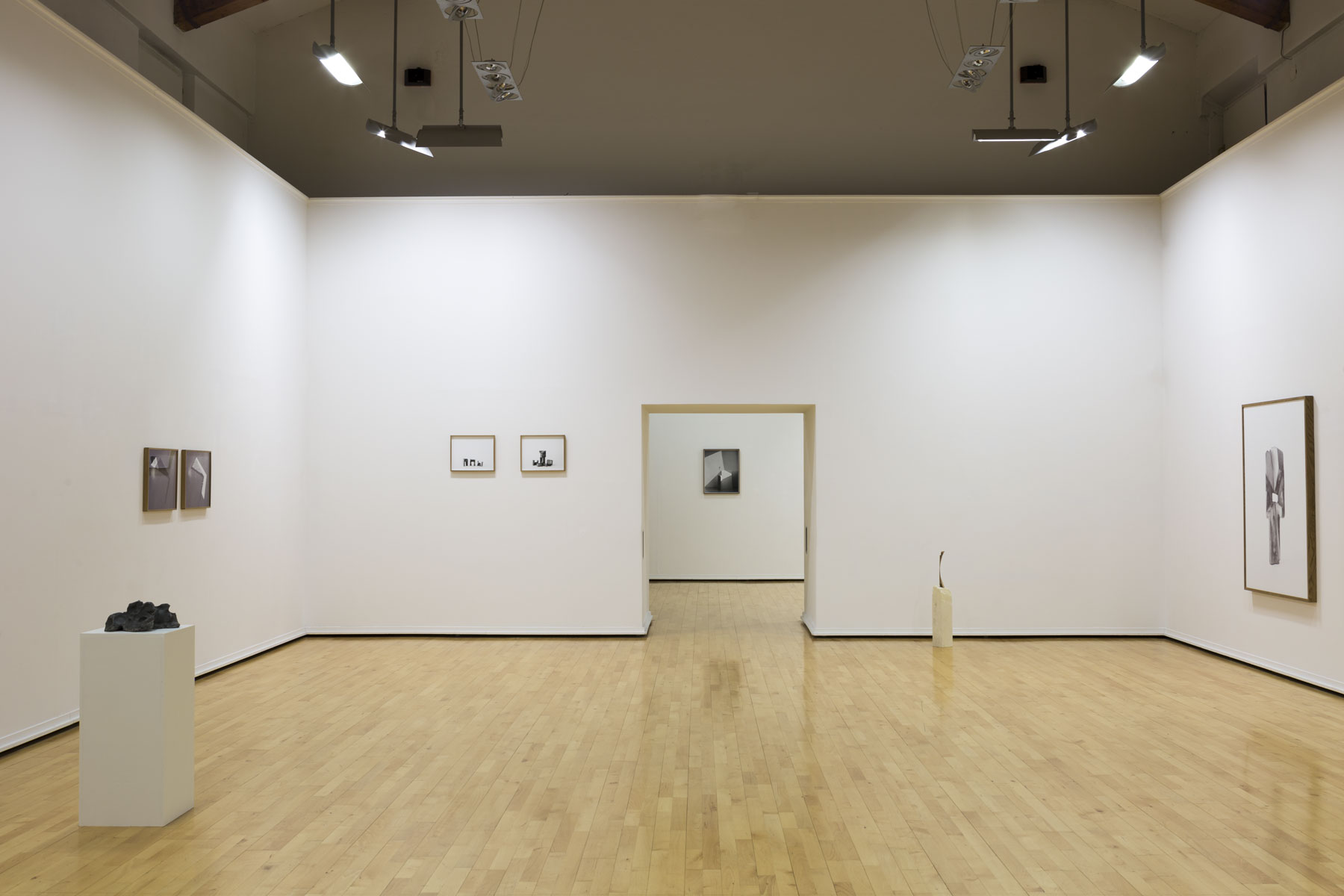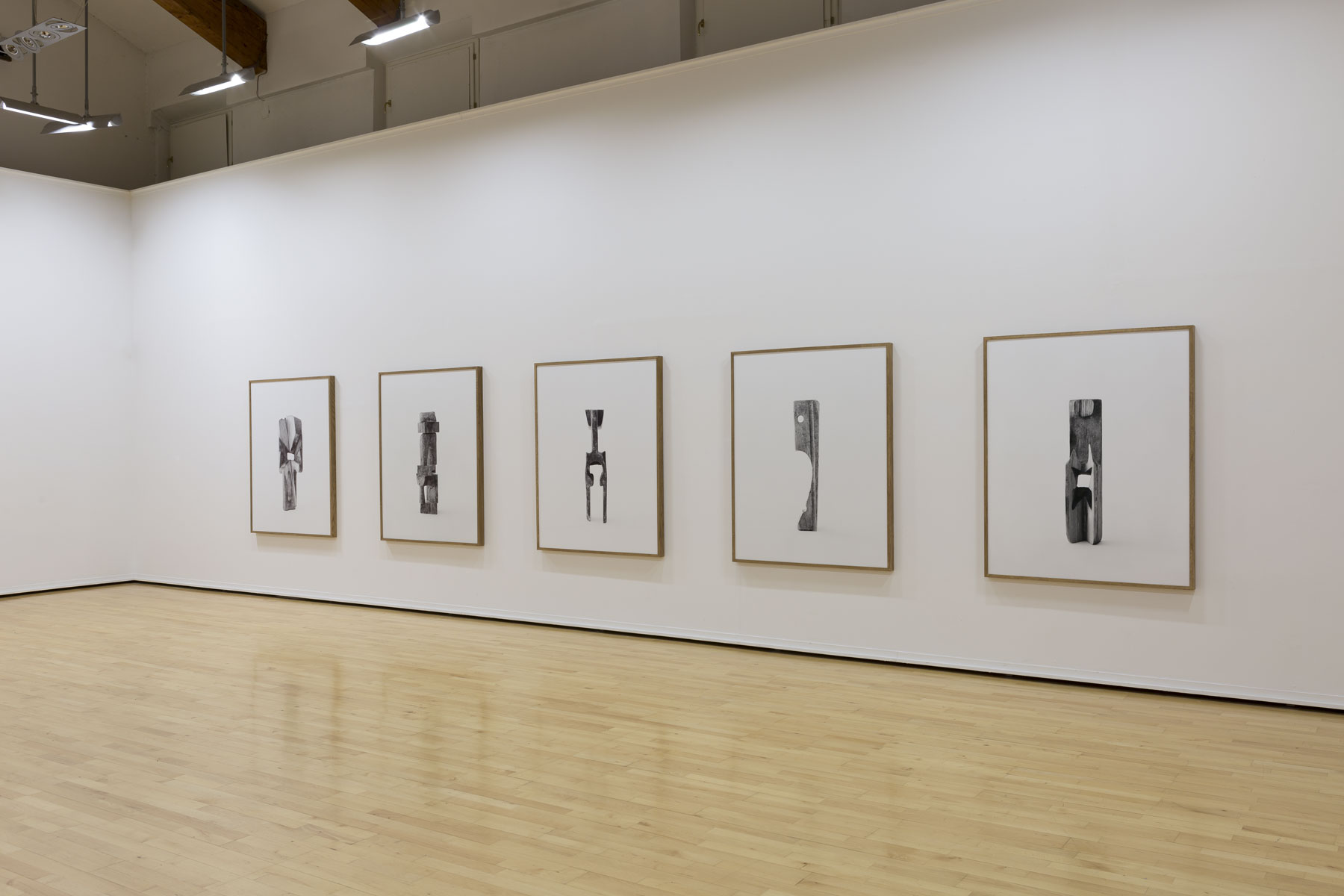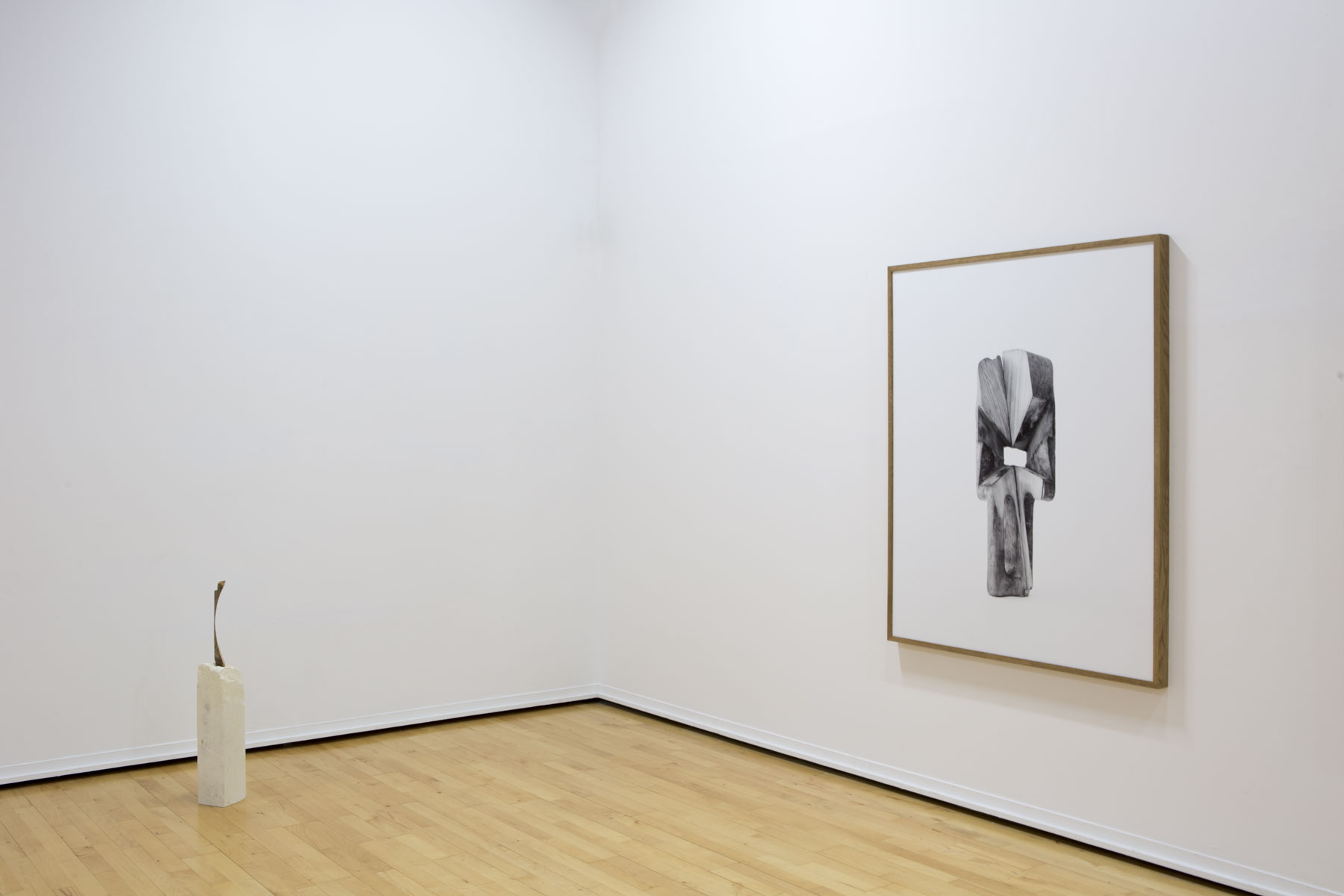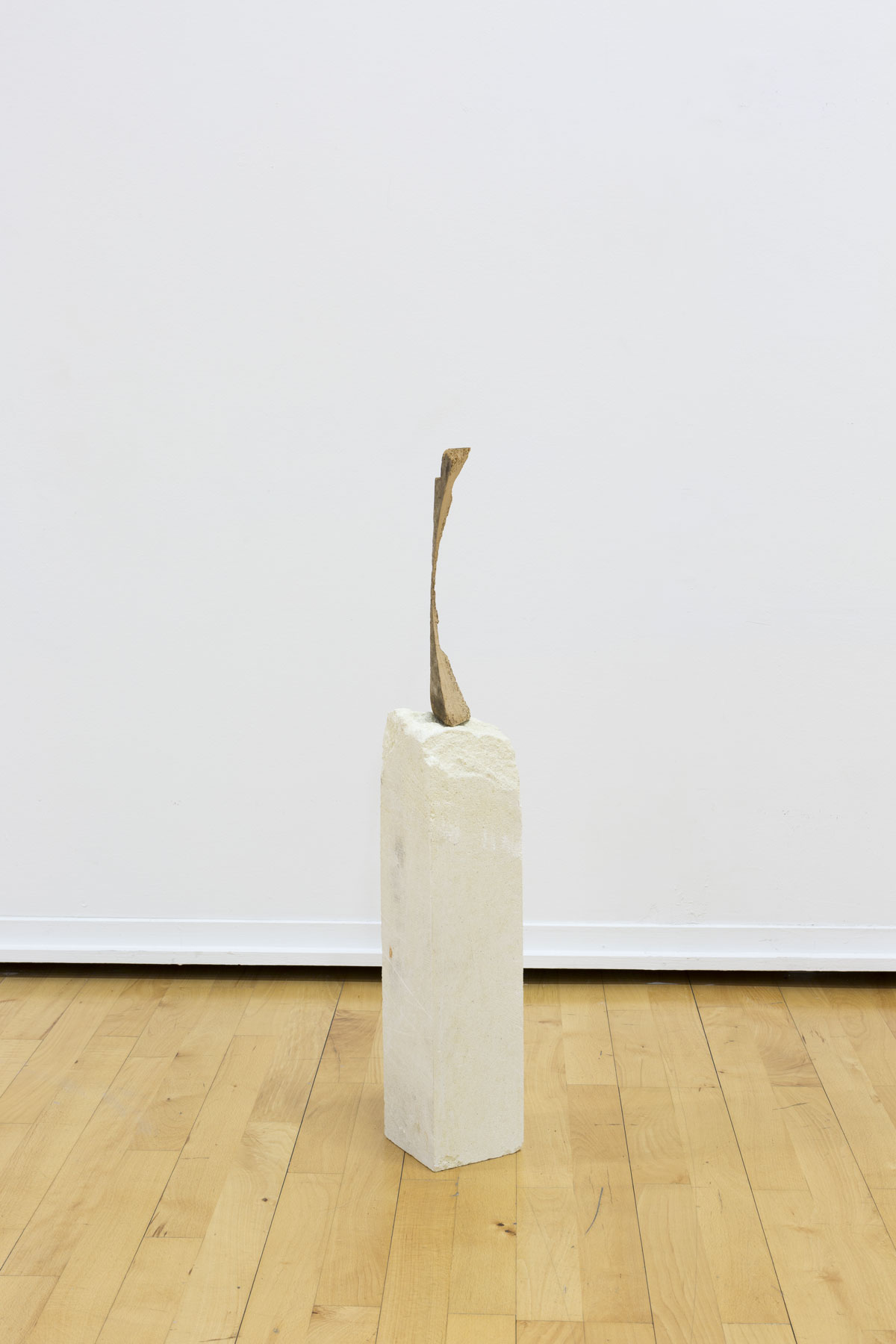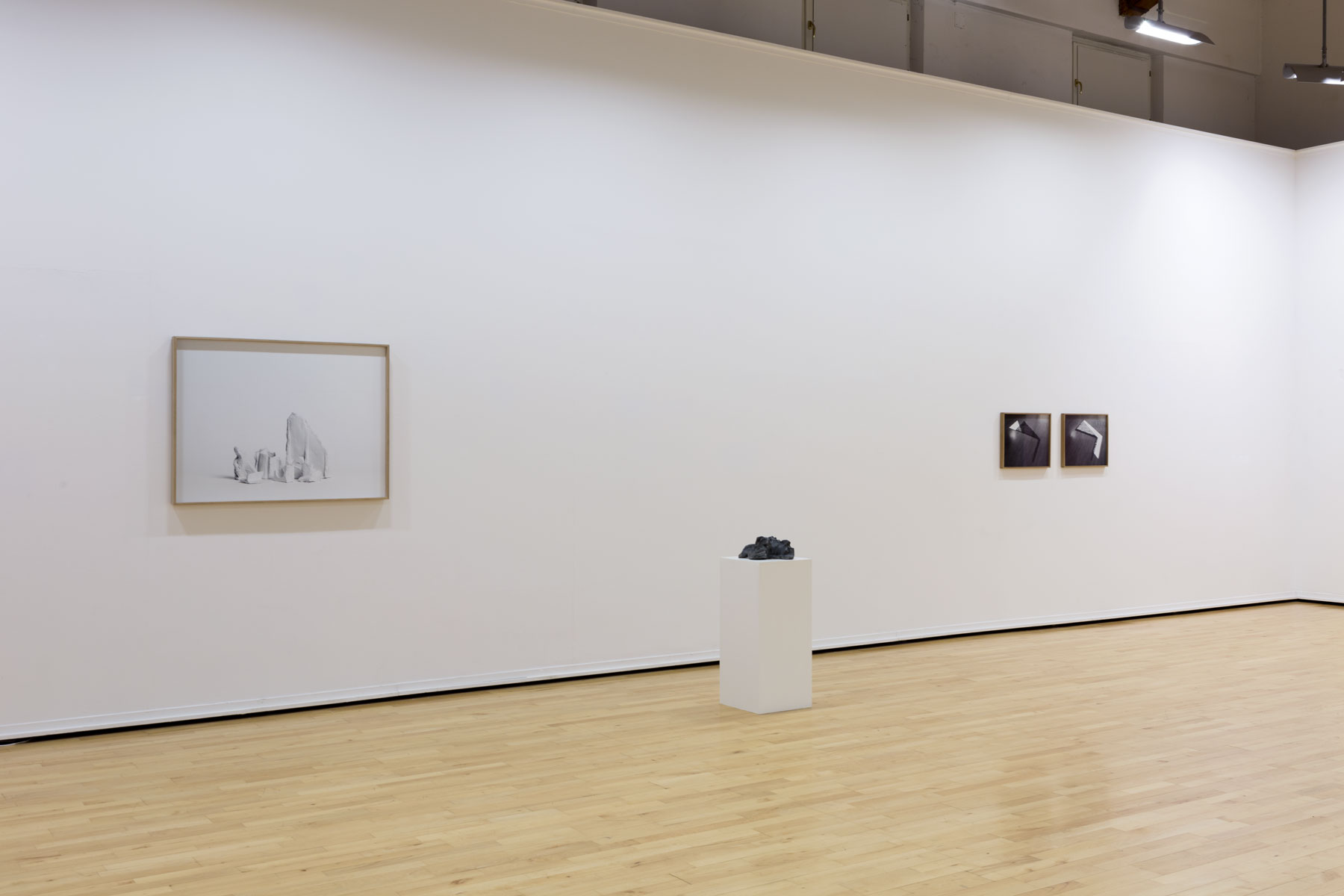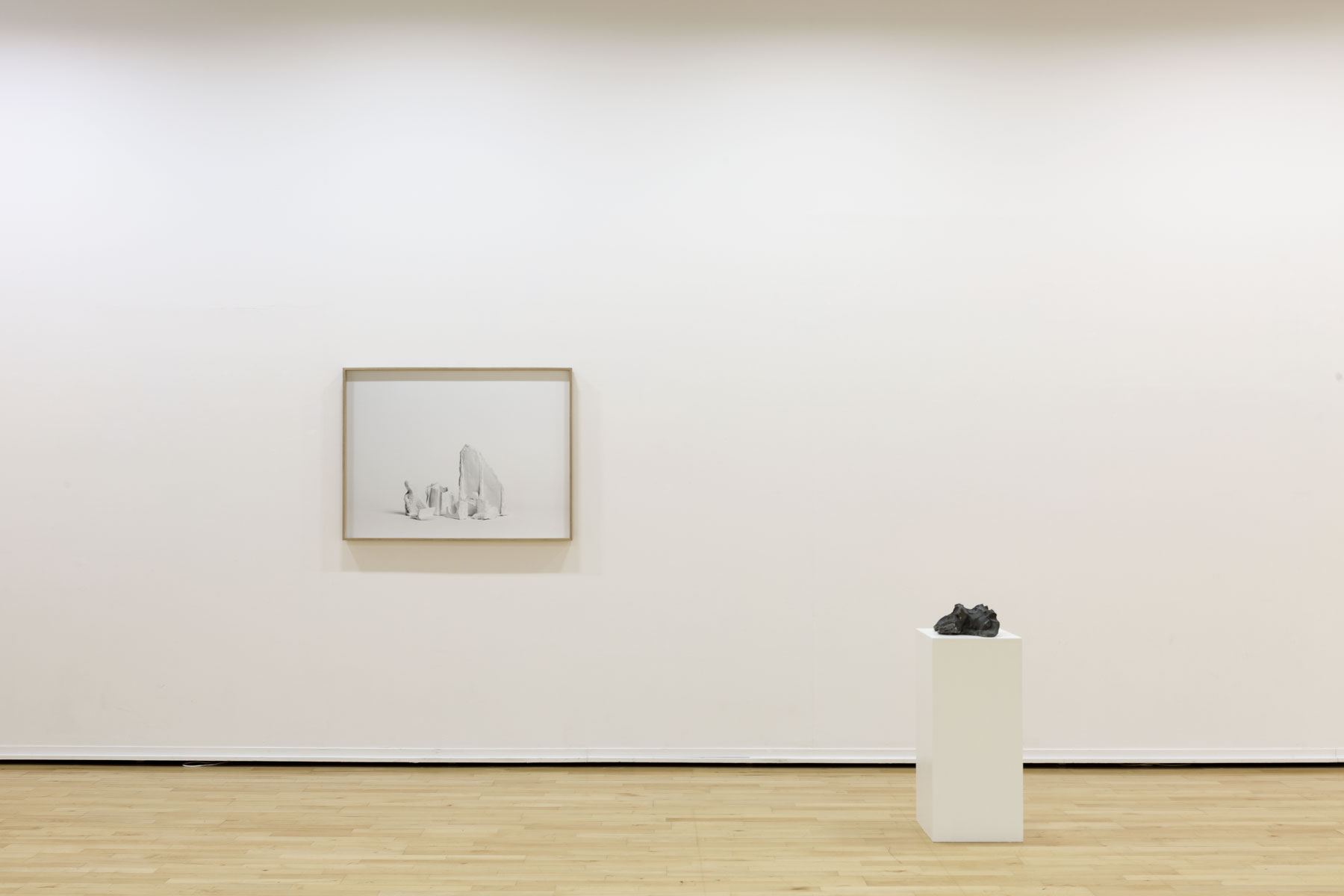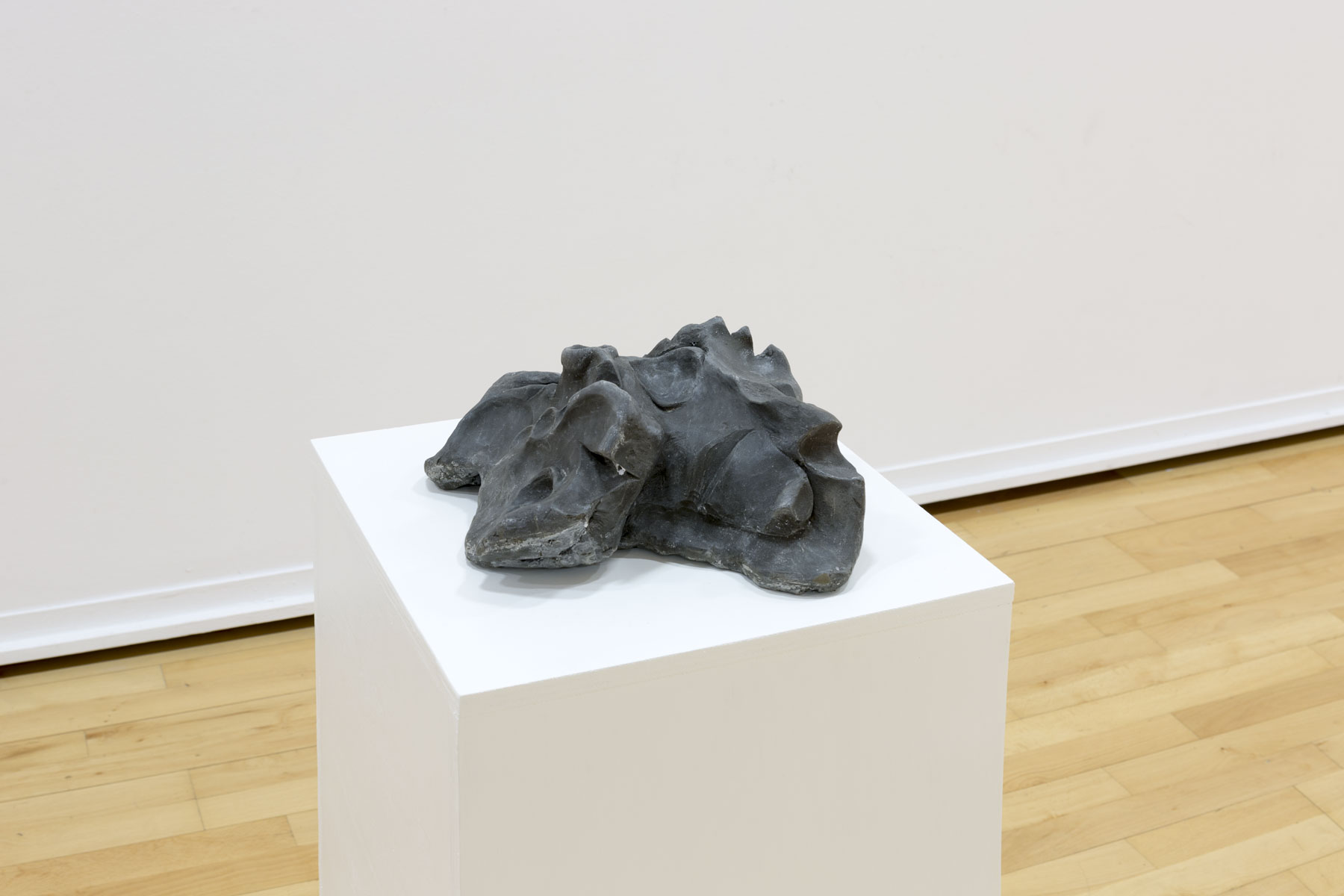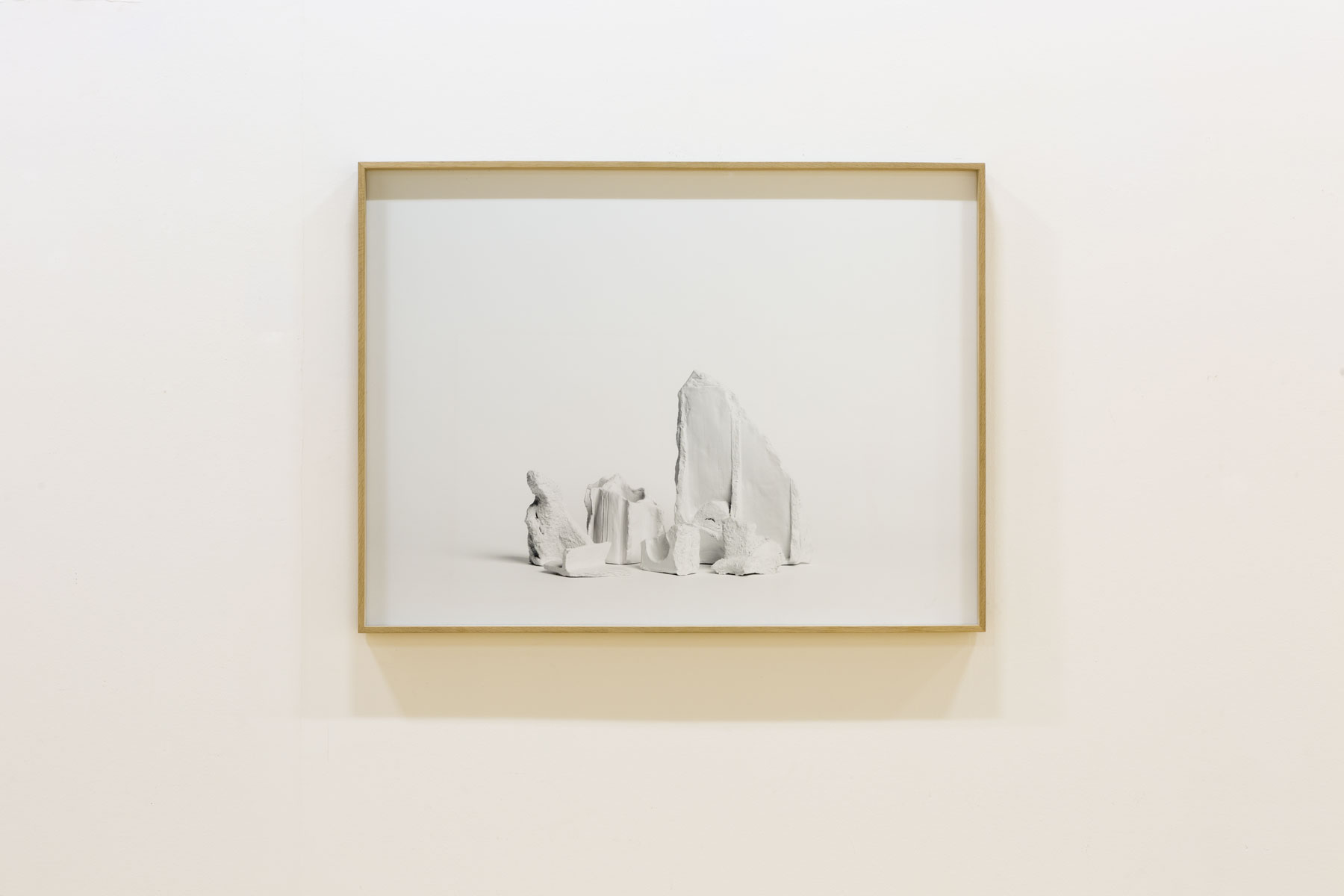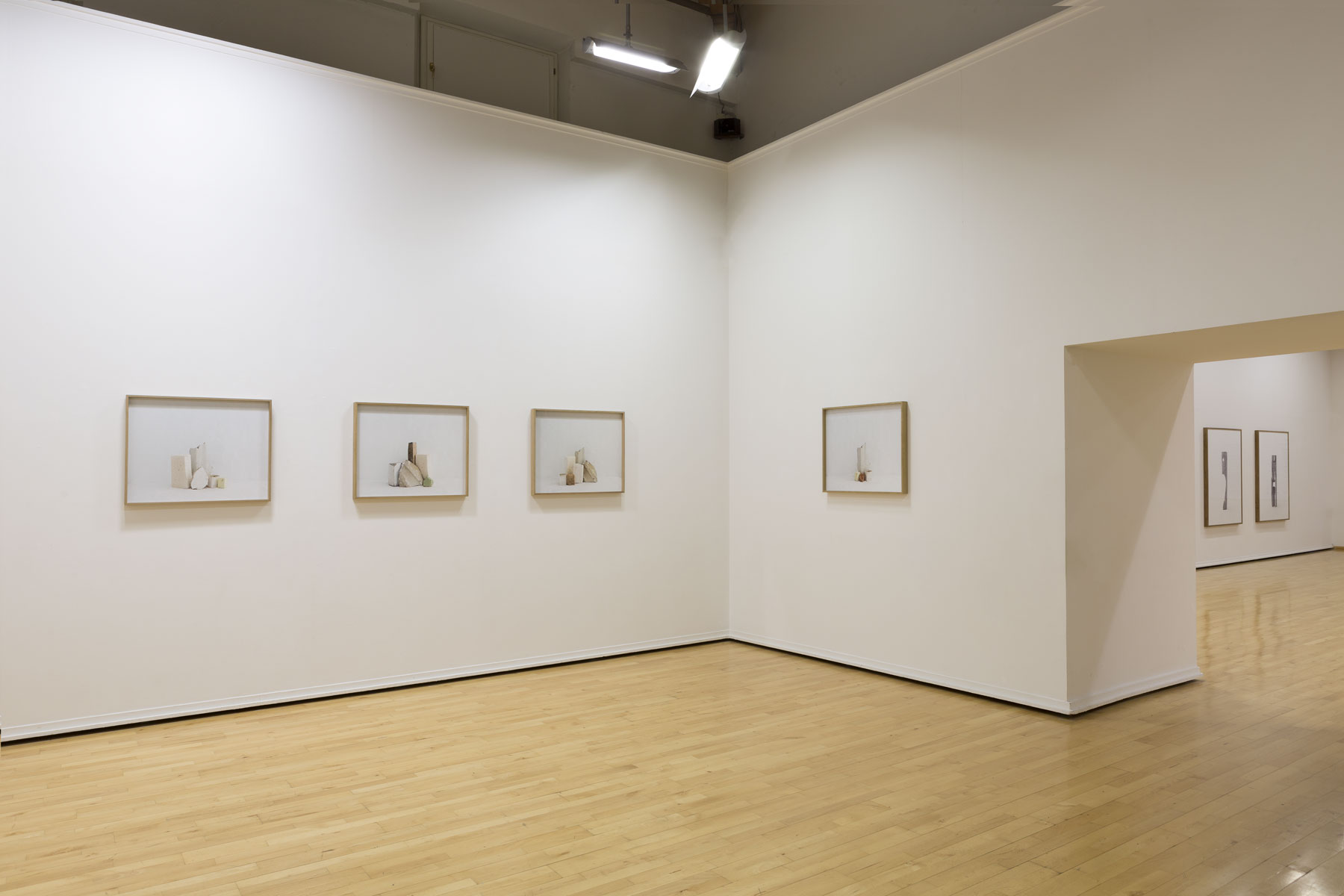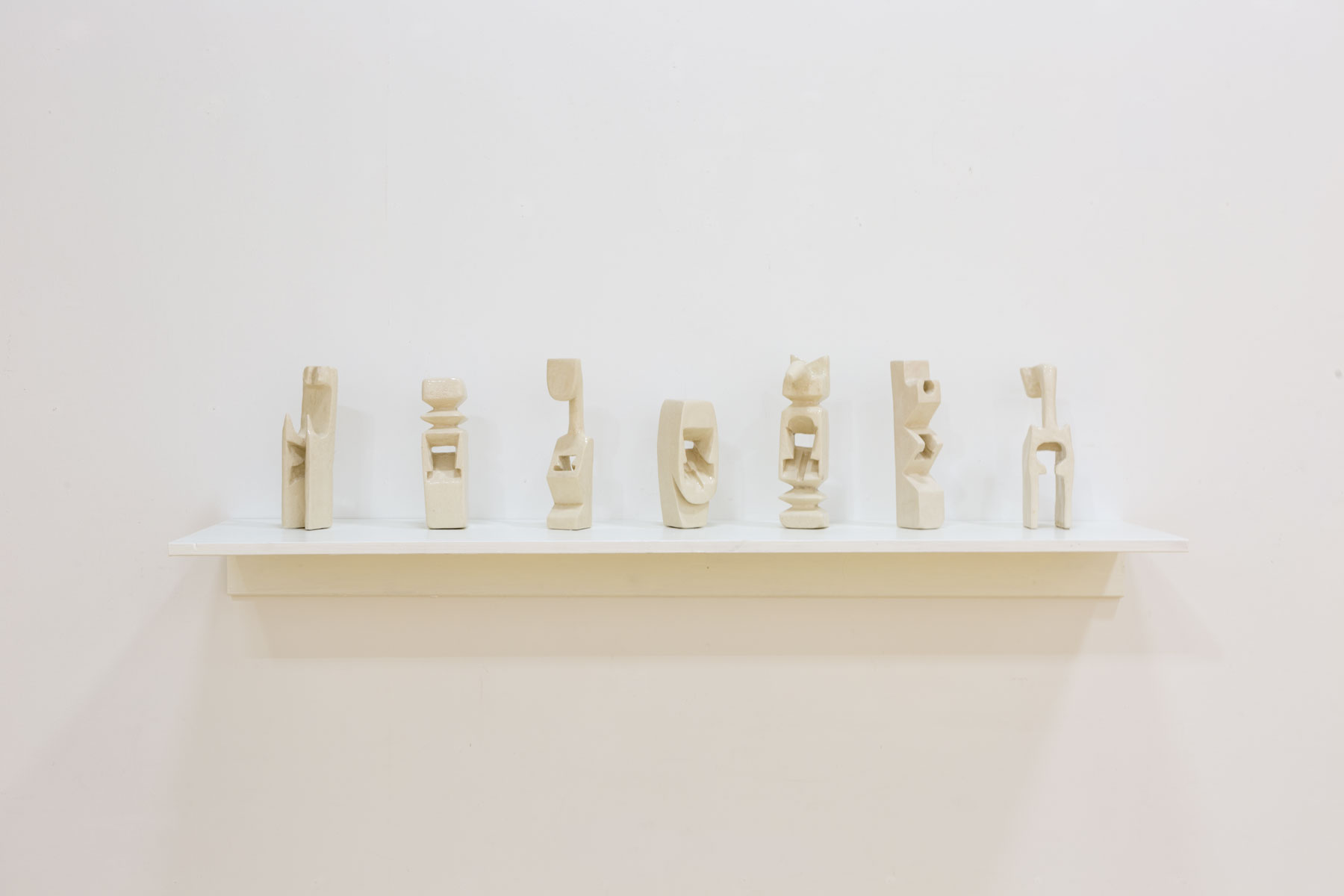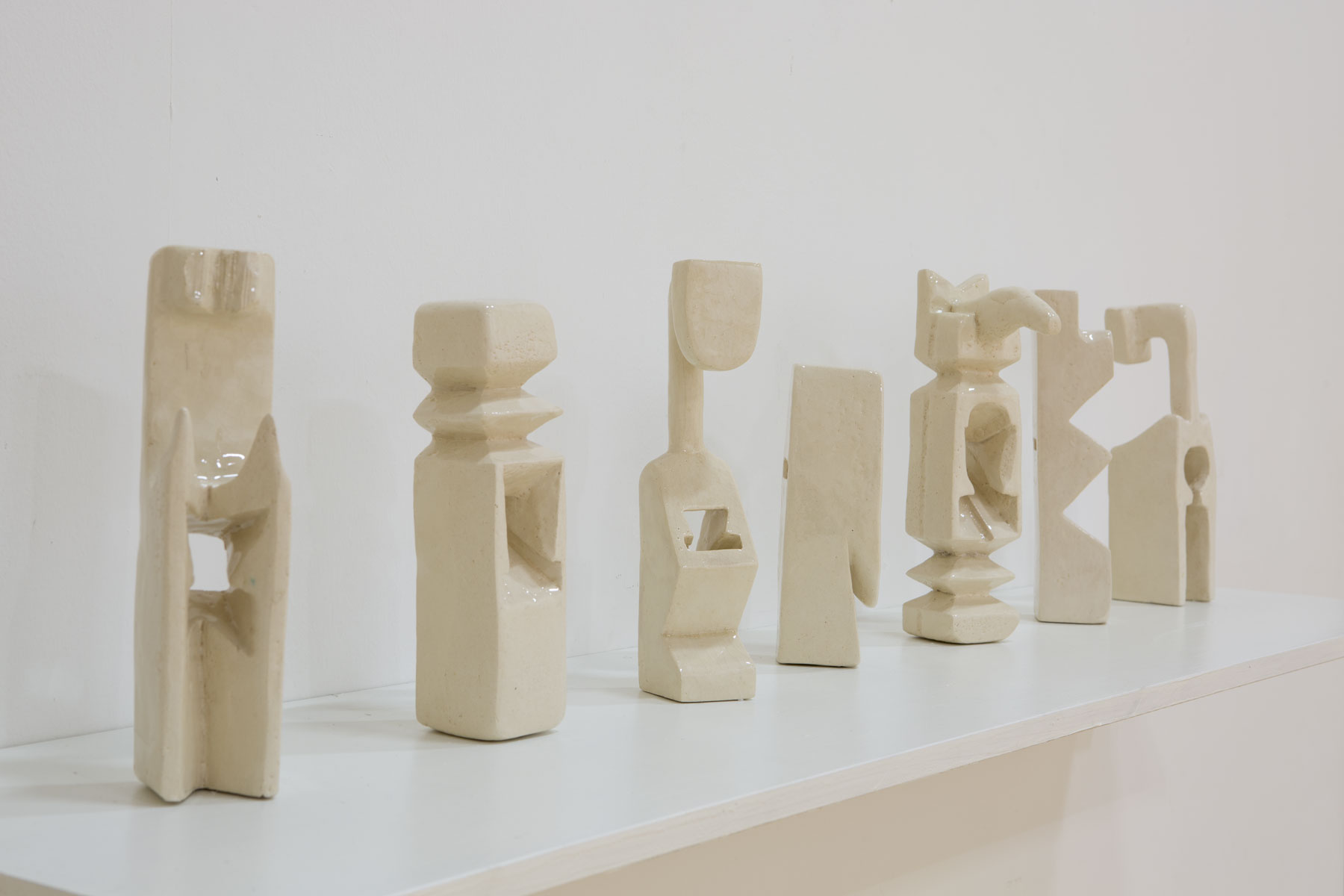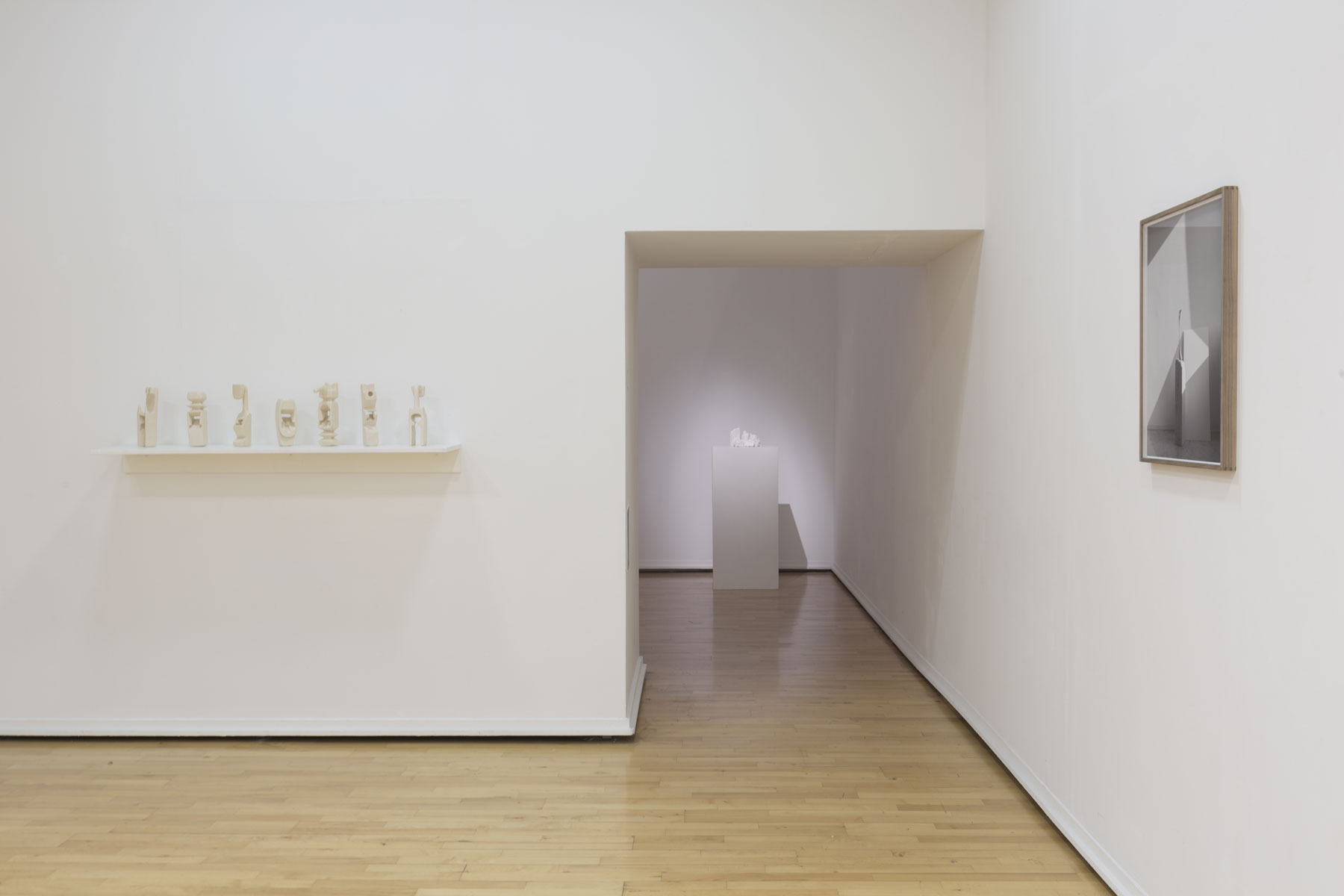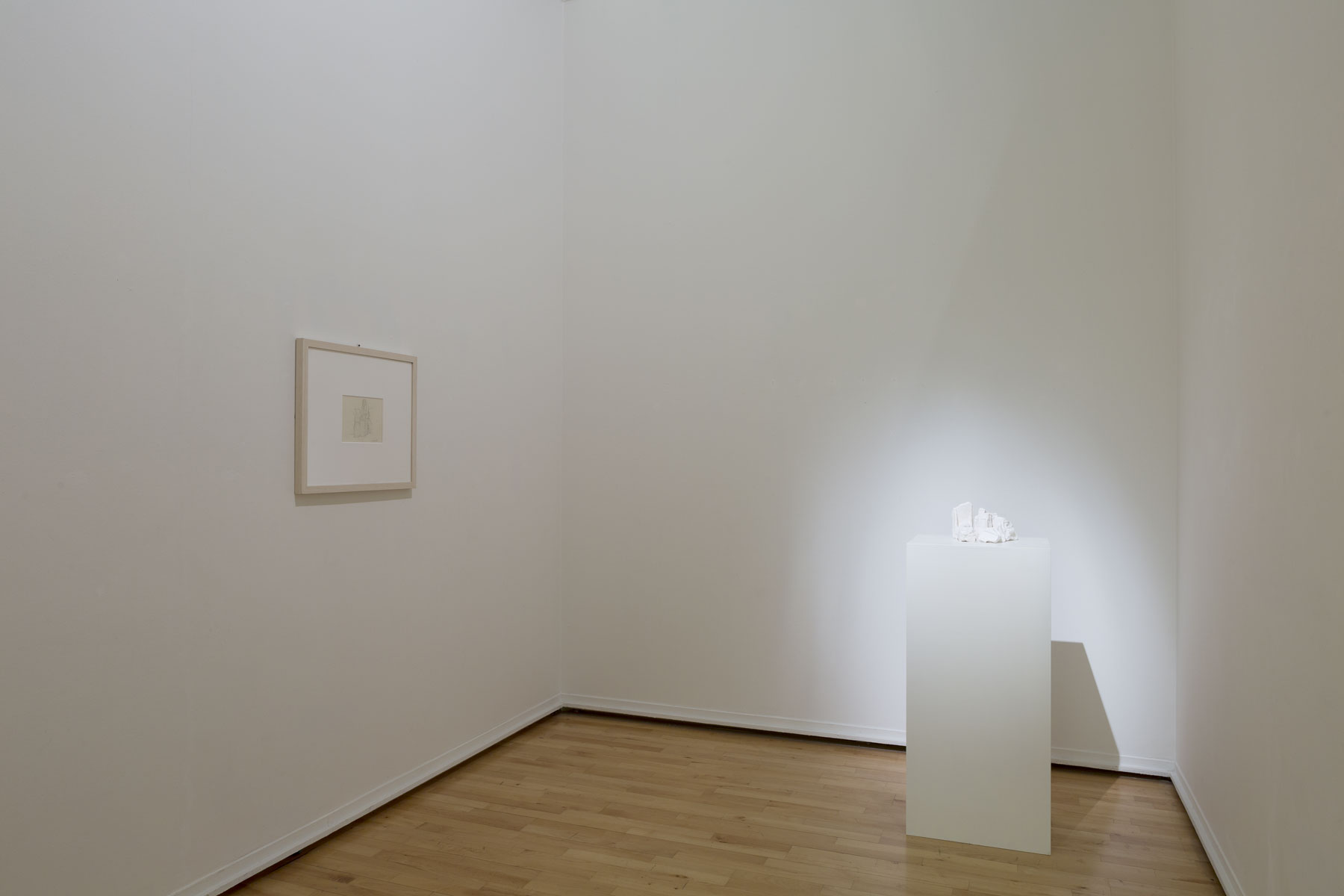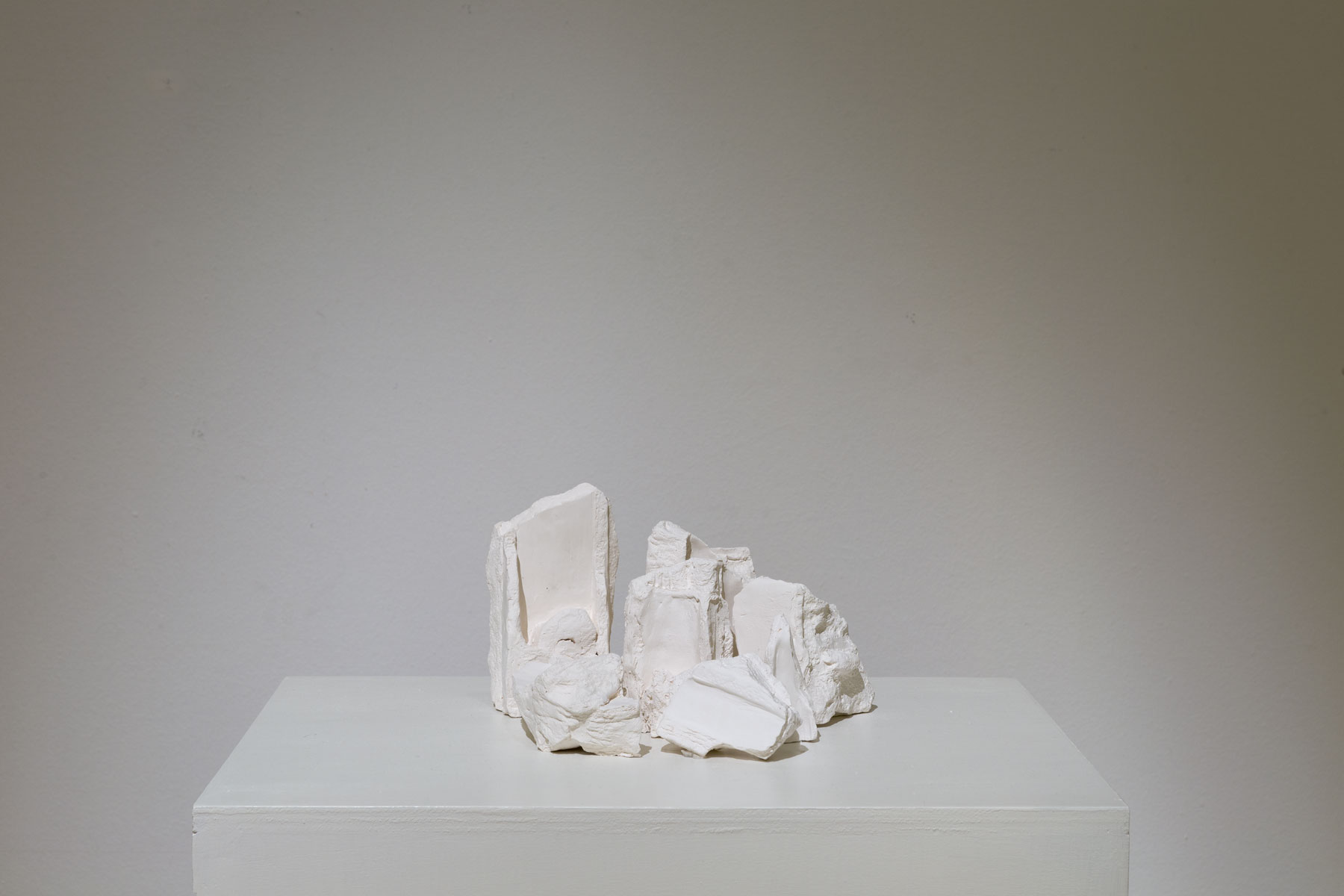Dio è nei frammenti
Solo show | Galleria Civica di Modena | Modena, Italy | May 20 > July 15 2017 | Curated by Daniele De Luigi and Serena Goldoni
A conversation with Marco Maria Zanin
DANIELE DE LUIGI: Your research draws on an intense relationship with rural civilisation. Where does that originate?
MARCO MARIA ZANIN: It’s funny that I’m now answering this question sitting at the kitchen table at my maternal grandparents’ house. My grandmother passed away about a year ago, but my grandfather, Arduino, ninety-three years old, is sitting in his armchair in the living room watching television. Behind me and all around there are the objects that accompanied the most wonderful and unforgettable days of my childhood: the wooden candlestick holders which we used when there was a power cut for our candle-lit dinners, the olivewood chopping board with the tray that collects the crumbs to give to the birds, the copper pan from which I would carefully scrape off the crust of my grandmother’s polenta, my grandfather’s little inlaid box for the communion economy, the tin for the roly-poly cakes that my cousin and I would assault for our snacks. And this table, where we used to make bread, home-made pasta, pesto as soon as the basil in my grandfather’s vegetable garden was ready, walnut liqueur on St. John’s day, tomato sauce in August. Where, in other words, to this day, in its simplicity and in the profound desire to perform it together, every gesture becomes a ritual. And where time, despite the fact that outside the world was transforming ever more quickly, was punctuated by these little seasonal collective rituals which left us with a tangible feeling of peace inside, an inner point of rest which, whatever happened, I could sense was as solid as a rock, and that from there I could face any challenge thrown at me. The world of my grandparents, born into families from that peasant world of the Veneto region known as ‘the South of the North’, long before the economic miracle, thus grew within me until it became a North star, a trajectory.
DDL: And so it’s a link that became embedded more and more in objects thanks to their evocative power, transferred through their material presence. I imagine that among these, there were also planes, the tools with which the carpenter/woodworker would shape the peasant world, and which have remained more or less the same from ancient times right up to the present day. I believe you’re interested in this kind of continuity, the threads linking generations and eras, and yet that at the same time you feel the need to intervene on those same objects with drastic and irreversible actions.
MMZ: When wandering around antiques markets, I kept being drawn to these old planes, which I saw my grandfather use when he was doing woodwork. The more I looked at them, the more I recognised those almost archetypal forms, as if the hands of those artisans had been guided by something profound, an intuition from a human space in which the origin of everything is engraved, but at the same time by the ability to perceive and interpret a specific local identity. The cut frees the shape that I sensed within them, and opens a door, a channel. Georges Didi-Huberman says that the remains belonging to the past may be considered symptoms of other eras that pulsate beneath the surface of the dominant one, even though we, having adopted a linear vision of time and history, are not used to noticing it. I use the intervention to ‘cut the throat’ of the description of the object as a carpenter’s tool, but even more so to break the status attributed by certain categories of thought of the dominant era which relegate it to the status of antiques market object or collector’s item, or even worse, a museum piece. These are the habits, or rather the pathologies, of a society which has flattened its horizons around the function and consumption of things. Life equals function. No, we need to open up this horizon, inflict a wound upon it. But the wound, to cite an expression of Don Tonino Bello, which I also exploited to title the series of ‘planes’, if we are capable of looking through it, may also offer an exit wound or a slit hole: “The wounds of the Saviour are slit holes through which the light of the Resurrected may shine.” Also in our own lives, wounds often offer us the opportunity for a passage, a further understanding and rebirth. Those cuts are supposed to be an opening onto another era, a primitive sphere, onto an unconscious and collective extension which lies at the heart of a great number of civilisations linked to the earth, prior to modern civilisation yet still alive, while also at the basis of our own history. An era which, in my opinion, it is necessary to draw out from the space of consciousness in order to feed the present as an anachronism.
DDL: I find that in this action, alongside this – in a certain sense – dramatic component, there is also a strong element of play: the childish and playful gesture of breaking in order to understand, but also to rebuild in a different way, one which is already a key element of primitive man. According to Johan Huizinga, playing means building a world and inhabiting it, and it is one of the fundamental driving forces behind the rise of human civilisation, to the point of possessing an aspect of sacredness. And let us not forget that the dimension of play is also essential to the artistic avant-gardes: breaking, observing the outcomes of chance, seeking out the archetypes in the unconsciousness of objects lies in the very DNA of the Dada and the Surrealist genealogy.
MMZ: The universe of the child is extraordinary; I ought to mention a whole series of authors who have spoken about it in this sense of nearness to what Rousseau would call the Origine.
The problem, excuse me if I oversimplify, is that ever since Descartes, Western modernity has made thought coincide with being, flattening the horizon onto reason. We have walled up reality with countless pigeonholes of thought, and done away with the sphere of the sacred, circumscribing it to that of religion. Instead, the child, but I would also include myself here, holds onto a magical vision, speaking to things, to animals, and feels deeply part of what surrounds him, in which he recognises a soul.
Curious and spontaneous interaction, coupled with the sensation that things have a life of their own, leads the child to take things apart, and this reminds me very much of Benjamin’s method of assembly, that procedure which was necessary so as to always leave the door open to all possible realities. The dismounting process should be a constant practice to avoid thought categories crystallising everything, without leaving space for that which is a permanent condition of life: the future. Furthermore, to avoid us slavishly walking along set paths without giving ourselves room for a change of course. And perhaps this is one of the strongest stances of the avant-gardes that I mentioned. I believe very firmly in our ability to construct reality. I recently tried out some of the ‘hands-on workshops’ designed by Bruno Munari: an amazing experience of freedom. Nevertheless, how many Bruno Munaris would we need in order for us to really be able to inhabit the world that he proposes? How many political or educational proposals are actually based on play?
“Building worlds and inhabiting them” is perhaps one of the notions dearest to me, but in this regard, apart from a few cases, I don’t have much hope in contemporary art. Of course, art may help, it can make your knees tremble for a second, a work can undermine your whole way of seeing things, it can perhaps construct a niche, a room we can live in, and even just for this reason it is worth the effort. But I think building a world is something more, a collective, pluralist, multi-sectorial space, and as far as this is concerned, there is a lot to be done.
DDL: I would like to go back to the action that you carry out on objects, because in actual fact it is twofold: the first phase is followed by a second, just as important, of translation. You transform them into images by portraying them photographically: sometimes you turn them into sculptures, and sometimes both. When Van Gogh painted a lowly pair of shoes, the fact of making them the subject of an artwork made them worthy of attention in their own right (according to Heidegger this enables an ‘opening’ of the essence of the subject, to use a term which leads us back to the concept of the slit hole you mentioned before). The same thing was done using photography by artists such as Renger-Patzsch or Weston. However, if through the translation process you preserve that intent to ennoble the subject, the previous transformation leads you well beyond realism.
MMZ: In a wonderful book called Memoria e Sociedade, the writer from San Paolo Eclea Bosi states that “memory is like a rough diamond that must be smoothed by the spirit.” This sentence contains two major clues for the elaboration and maintenance of memory: the first is that the matter of the past must be worked, and the other is that the spirit, the sentiment, must come into play as a protagonist. In order to maintain memory, it is not enough to read books, take photos, visit monuments and museums, collect ancient objects, but a doing process must be undertaken, an active relationship that generates a transformation of what emerges from the past, and which according to Eclea Bosi must be re-evoked by sentiment. The decision to intervene on objects originates here.
Renger-Patzch, Weston, but also Man Ray, Tina Modotti, Moholy-Nagy and other artists in those years worked on the opening of the essence of the subject through photography, focusing above all on forms present in nature. But perhaps the most hard-hitting experiment was that of Karl Blossfeldt, who through his alterations of the form shows us the informal which lies beneath it. ‘Primordial icons’ at the basis of the architecture of the visible, as Benjamin said, which help us to absorb expressive codes in order to transform the world into imagery, to build a bond between the corporeal world and the space of imagination. In other words, the archetypal forms that I also recognised in the planes. The archetype is essentially something open, generative, a sort of driving force which, over time, continues to exert its magnetism. In Ferite feritoie this outpouring towards the space of the imagination takes place, thanks to photography, also with the increase of the scale, in which the carpenter’s plane slips even further away from itself and short-circuits the other sense horizon that I want to reach: it becomes a totem, a monolith. The object printed onto paper becomes a sign, its two-dimensional nature narrows down the body to the point of turning it into spiritual matter, as Hegel would say. Instead, my ceramic reproduction, in Ferite feritoie and also in Restituzione, is a further passage of that work that Eclea Bosi speaks of: it’s a matter of remaking the material of the past also through its corporeal internalisation. These are not casts, but real copies, portraits carried out with the same curiosity as that of the child imitating and with the same love as the painter painting his beloved. What arises from the demolition rubble of buildings in San Paolo is not restauration but rendering: I do not close the process, but rather I leave it forever open in its unfinishedness.
My intention is by no means to ‘ennoble the subject’, as you say; quite the opposite. I believe the planes, but perhaps also the rubble, are already noble in their own right, and that as such they have no need for my intervention. What I try to ennoble, please excuse the hyperbole, is us ourselves, insofar as we have to learn to seek out the sacred even in these fragments that we have relegated to the outskirts of our universe.
DDL: In San Paolo, following your ever more frequent and now habitual stays, you have developed a dialectic between the local dimension of the countryside and the globalised worlds of 21st-century megalopolises. One of the fulcra of this dialectic in undoubtedly the concept of time: on one hand cyclicity and slowness; on the other, linearity and acceleration.
MMZ: My eternal doubt – as Ana Luisa Lima would say – is this: today, how can we ensure that the relationship with our roots, including that with the earth, and the great transformations of the contemporary era may live together and nourish one another? I’m certain that the relationship with the earth and the perception of what Pasolini defined as the ‘peasant mystery’ are among the fixed points to be reappraised in order to reorient the route of the human community. It has to remain clear that mine is not a radical criticism of contemporaneity: it’s a criticism of the loss of man’s connections with the roots and sphere of the sacred, as well as those intimate connections that underpin our relationships. Modernity and the transformations that have taken place over the last few years have largely generated opportunities; the problem is that they have been so fast that our consciousness has been unable to keep up, and it often happens that instead of experiencing them in a knowing manner, we undergo them passively, with devastating results.
I remember the first time I walked around San Paolo, I was all atremble, to the tips of my hair; it was a very strong sensation which then led to the generation of various different things. San Paolo is a world unto itself, an unforeseeable organism made up of a great number of worlds and infra-worlds in which everything is driven to the point of excess to the point of overflowing, sometimes, into the unthinkable. This is the contemporary metropolis, the ecosystem in which the violent and dehumanising mechanisms of the market /capitalism, uprooted from the rules and traditions of the old world (or that of English-speaking culture), but also the legacies of mystic, pre-Colombian traditions, the cultures and religions of migrants from every part of the world live side by side in a scenario with enormous problems but also extraordinary rays of the New.
Since I started to split my time between Padua and San Paolo, I have tried to strike one against the other, like flint stones, just to see what happens to these two worlds: one anchored to the past (by which it is squashed), and the other projected into the future (by which it risks being swept away). However, I do have the sensation that one might be a good lens through which to examine the other.
DDL: Maggese comes across as a contemporary ode to the former of these two polarities. In this work, the land and the sunlight, the visible elements, triangulate with the invisible element, i.e. time.
MMZ: Maggese represents a synthesis of various crucial elements of my research. The ‘maggese’ was a peasant practice by which the land was left to rest for a month, that of May, so that it might be enriched once more with the nutrients and substances that it had donated to the previous harvest. In the two images, the earth on the floor of my studio with the shape cast by the light when it enters my window and the two shots of before and after its passage on the earth hark back to the seasonality of the peasant world, but also to the meridians, to the sundials of the Andean populations, when the sun and earth marked out time and guided the lives of men.
There is however another level of interpretation, which in my opinion justifies its presence within the ‘constellation’, along with Ferite feritoie and the other works. The sleep of the earth in the ‘maggese’ may be compared to the oblivion of those who, in the legend, drink the water of Lethe, which made people forget things of the past. According to the Greeks, for those who could not quench their thirst there, eternal torment awaited. Oblivion allowed for rebirth in a new life. Then, drinking from the spring of Mnemosyne, mother of the Muses, was what made it possible to recall once more.
There is a healthy form of forgetting that allows things of the past to sink and settle on the bed of the deep dark lakes of the unconscious, only to remerge, in a new guise, as humus for the present.
DDL: According to Arjun Appadurai, consumption has transformed the experience of time, focusing on the freedom from habit and pushing towards an aesthetic of the ephemeral, which is broadly valorised so as to train the modern consumer. The pleasure which is generated lies “in the tension between nostalgia and imagination, in which the present is represented as if it were already the past.” Your work on rubble is an exact inversion of this dynamic between past and present.
MMZ: Levi-Strauss, in one of his famous phrases which echoes that of Appadurai, when observing San Paolo in the ’30s, wrote: “here everything looks like it is under construction, but it is already in ruins.” That is what happens when consumption becomes the North star: the horizon shrinks to an eternal present in which all our aspirations must be met. Nothing is designed to last over time. In cities like San Paolo, the buildings themselves, apart from certain works by great architects, are built to serve a purpose, without any aesthetic or stylistic characteristic reflecting an aspiration to anything higher, and without a message to be handed down to posterity. Once their function has been absolved, others are needed with different characteristics. What this process leaves to posterity is not even ruins but debris.
The still-life images of Lacuna e Equilibrio are produced using the remains of these demolitions, highly visible when walking through the city because they are piled up in huge iron skips in front of every building site. In order to create a short circuit between this process and a diametrically opposed horizon, the product of Italian culture, which as you say might trigger an inversion of the time dynamic between past and present, I cited Giorgio Morandi. Apart from his starting out from the little things, Morandi managed to extend time indefinitely, raising groups of objects to a sacred and metaphysical dimension. But this interruption of the era of consumption/capitalism takes place prior to the photograph, when I chose to use my time to go and look for rubble and pick it up, lovingly. Placing debris in the centre is a necessary Copernican revolution. Using something which has been voided of its purpose as a starting point means being able to fill it with something different, the heart of which is not necessarily its function but the pulsating of something of our own, as human beings.
DDL: In the monotheistic tradition, God should not be representable, and this leads us to seek out signs of His existence elsewhere. “God is in the fragments” – to echo that “God is in the details” which is attributed with various shades of meaning to Proust, Warburg and Mies van der Rohe – should this be interpreted as the quest for a potential theophany? Or maybe an attempt to catch a glimpse of the perhaps hazy glow of the sacred?
MMZ: I believe the work of the artists you cited, like that of many others who have worked in this direction – but also that of Jesus Christ – may be summed up in a single gesture: to dismantle the tendency embedded within man to worship false gods. A blind force which constantly overlies something pure and constantly unfolding: status, superstructures, labels, slogans, ideologies, power structures that confer upon us the illusion of control and of being something recognisable and important.
I believe “God is in the details” is more than anything else a warning that tells man to “be careful, don’t just sit and look at what you’re used to seeing, but stay active, keep your gaze sharp and differentiated, and seek out the essence of things.” In my opinion it’s a provocation to come into contact with the divine part within ourselves, an everyday attitude in which we are capable of finding wonderment in the things of the world, managing to perceive their pulsation and the vitality within them, without letting ourselves be caught up in superstructures. Saying that “God is in the fragments” means it’s here and now that something is throbbing, something to be sought out and listened to. A friend of mine, after having seen Ferite feritoie, told me that it was an act of compassion in the etymological sense of the term patire-con, to feel with. That had great resonance with me because an act of proximity to the fragments means remembering that we ourselves are also fragments, that we always have to start over from scratch in some way.
The fragments – but also Jesus Christ’s last, Pasolini’s outskirts and Revelli’s vanquished – are not just elements of other eras to bring to light in order to broaden our vision of the world; they are elements that in order to be integrated call for an effort on man’s part: to get up off his chair, to counter gravity and start walking to cover a certain distance. The fragments in particular also ask us to find a new collocation for them. That space in which we take part in the act – in the game – of piecing them back together in new shapes is perhaps also what we should get used to bringing into the everyday dimension in order to keep the many real possibilities constantly open.
